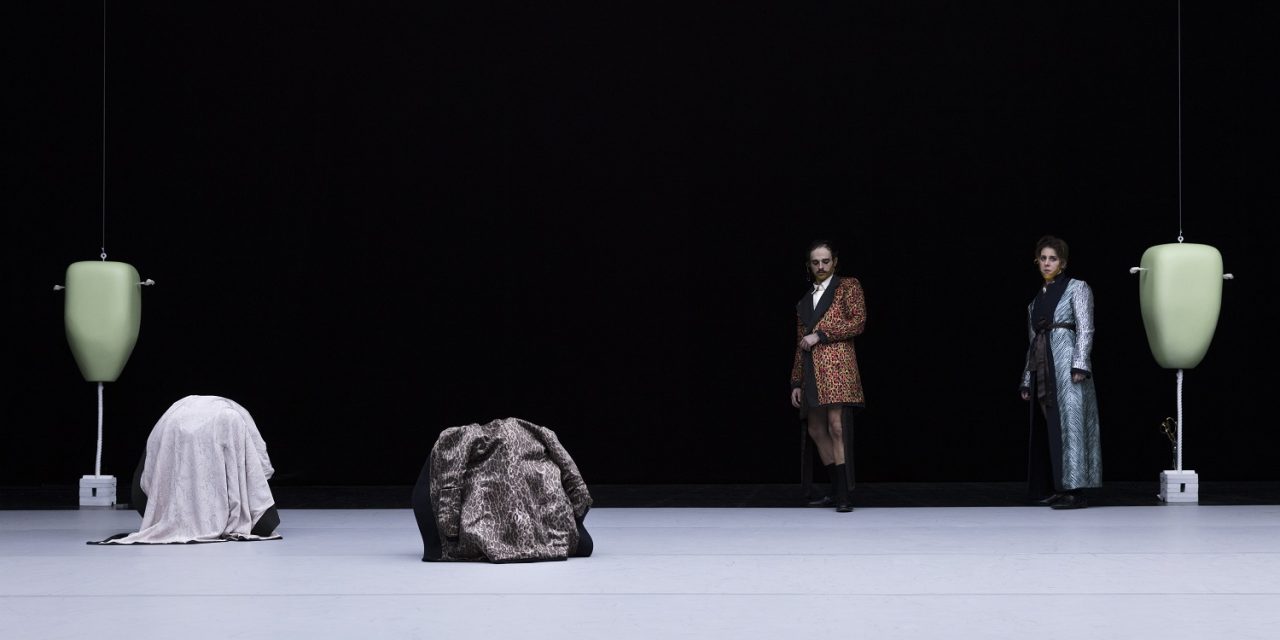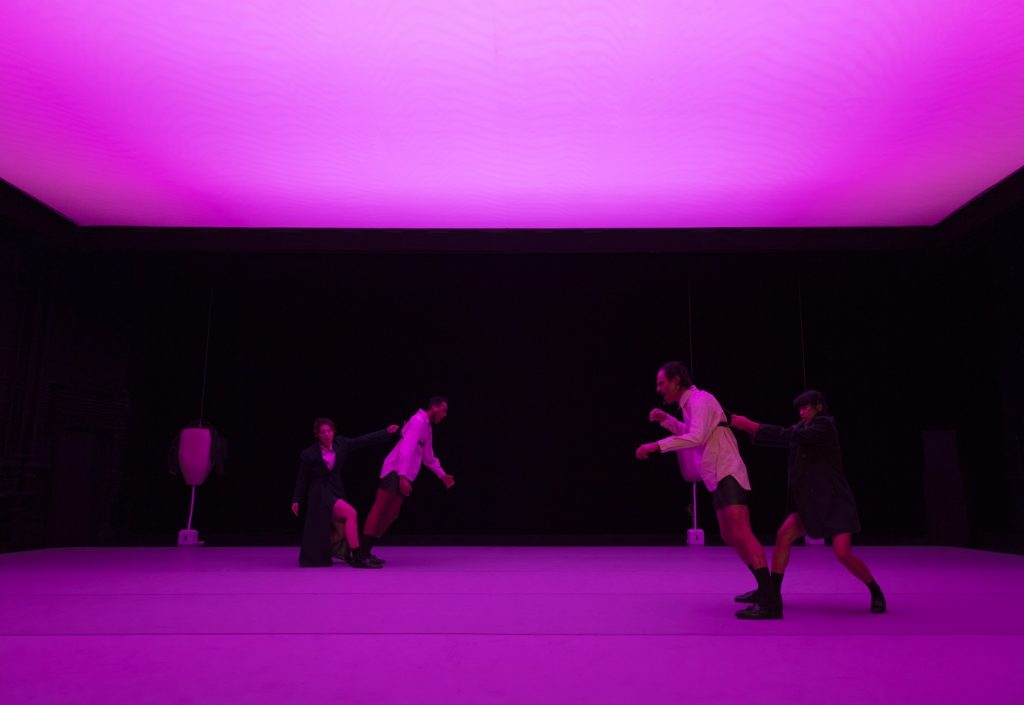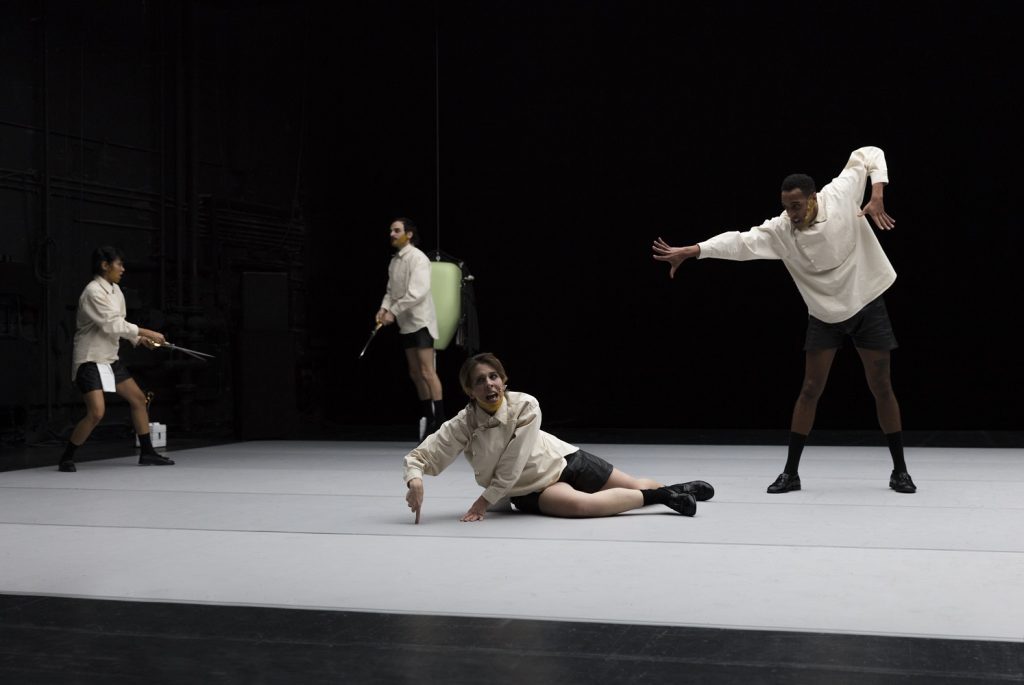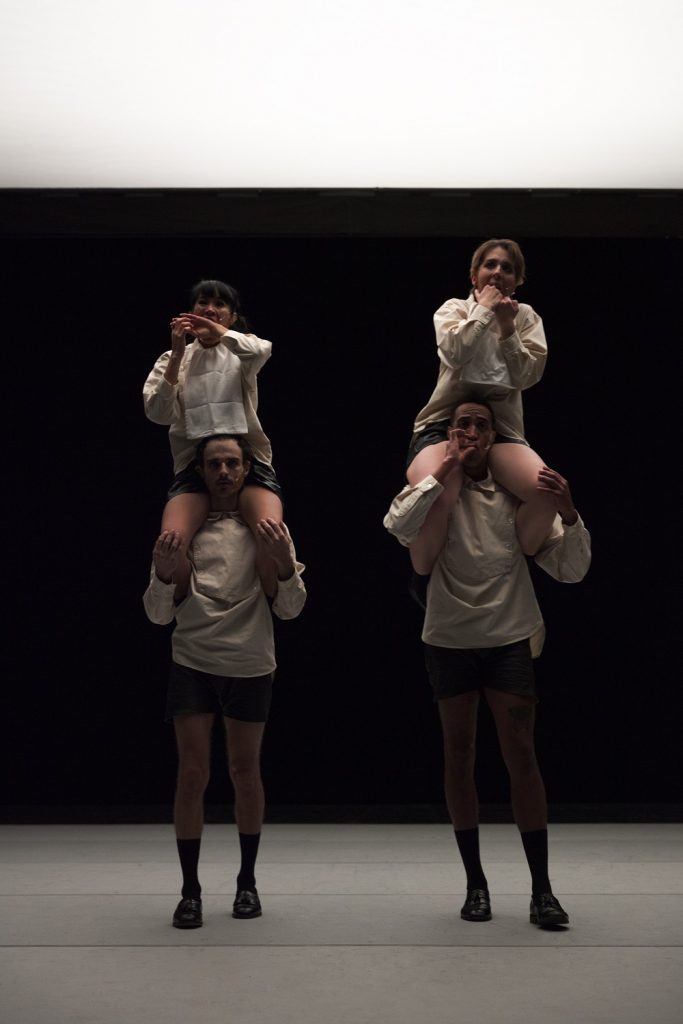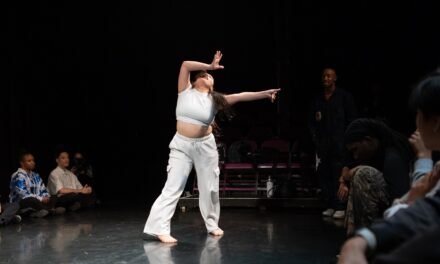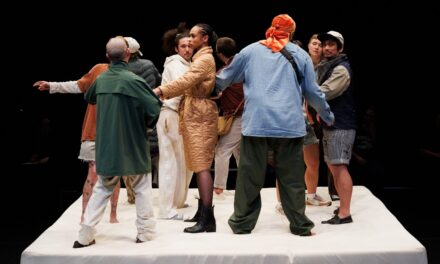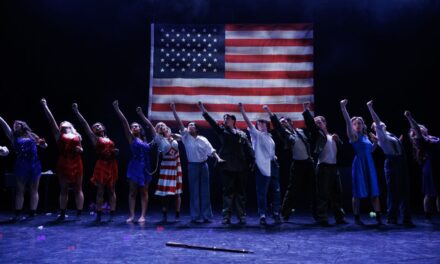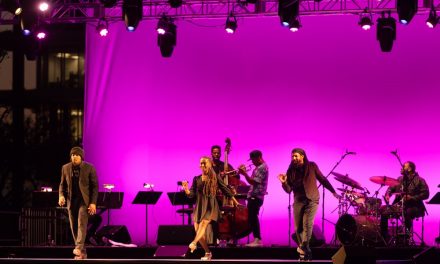This past weekend CAP UCLA and REDCAT C0-presented a contemporary opera in two acts titled The Want directed by Adam Linder, with music by Ethan Braun, and Libretto in cooperation with Sara Lehrer-Graiwer. Loosely based on In the Solitude of the Cotton Fields by Bernard Marie-Koltès, Linder’s version quickly buried itself into the weeds of ambiguity. A copy of the libretto was handed out to each audience member, but unless one took time to memorize it, there was not ample light in the house during the performance to read it. This was complicated even further when all four performers sung at the same time and only a word here and there was understandable.
The setting was stark, consisting of four white old style tailor forms situated along the back of the stage which acted primarily as coat racks. What was unique for REDCAT was the very low ceiling with a a solid piece of material that allowed Shahryar Nashat’s often beautiful and sometimes combative flashes to cast a neon-like lighting effect upon the space. In Act I, the costumes by Linder were simple white dress shirts and black shorts. Act II, the actors/singers put on coats and hats seen worn by Hasidic Rabbis.
Marie-Koltès’ two characters were nameless, labeled simply as Client and Dealer. Linder switched these to Offerors and Offerees, and throughout the production, just who had the upper hand shifted between the two. Rarely was the product being offered or accepted clear, but in one scene it did appear that whatever the product, it was addictive. The back and forth between Offeror and Offeree blended together interactions between buyer and seller with that of personal relationships.
As an artist, Linder moves between Los Angeles and Berlin, and in his “bio” states that he has “stretched choreographies into formats of text, costuming, service provision and opera”. His work has been presented in San Francisco, New York, at the Venice Biennial 2019, to name just a few, and he was the recipient of the Mohn Prize for artistic excellence from the Hammer Museum.
The Want had all the ingredients listed previously and Jessica Gadani, Justin F. Kennedy, Jasmine Orpilla, and Roger Sala Reyner did an excellent job of acting, singing and executing Linder’s choreography. The opening movement, performed by Reyner, traced the evolution of humans from a single celled organism to a fully formed and dressed contemporary man. It was one of the more interesting pieces of choreography. The rest incorporated pedestrian-style movement, an occasional leap or skip, robotic skittering, and intricate arm gestures. Even the movement patterns were basic and unimaginative, consisting of primarily moving in a square, in lines, walking along the perimeter of the stage, or shadow boxing. Granted, it is not easy to find singers who can perform operatic libretto while mimicking a boxer, marching and/or moving around the space while toting another person on their shoulders.
It appeared that Linder went out of his way to confuse, and in the process lost himself. In Act I the characters were combative, challenging each other to offer or receive what was being sold. Act II involved them being more intimate, and indeed they physically connected in seated and intertwined reclining tableaux.
There was wisdom in the written libretto. In scene I titled “Homo Economicus: Boots are made for Walking” an Offeror says, “And I know you will take something… We need not give it a name yet and finding out will take its own while: an undefined ‘want’ is a melancholic thing; anxiously hidden like a wrapped gift. I can wait.” In the scene titled “Face-Off”, an Offeree wisely states “Say, I was just drifting along and say, you were who you claim to be – I’m held up, inconvenienced and want returns on my time and yours is a shadowy kind of offer I will not sign for”. And in the final scene “Double Trouble” the conversation goes, OFFEREE: I only fear unfamiliar rules. OFFEROR: Even the one language we might share, that of money, whilst representing and guaranteeing that which exists, is only a signifier for what does not exist – for fantasy. OFFEREE: Well then what weapon?
Had Linder’s movement risen to match these words, it would have been an entirely different experience. The best moments can be viewed in the trailer here.
Written by Jeff Slayton for LA Dance Chronicle, September 23, 2019.
To view the REDCAT website, click here.
To view the CAP UCLA website, click here.

